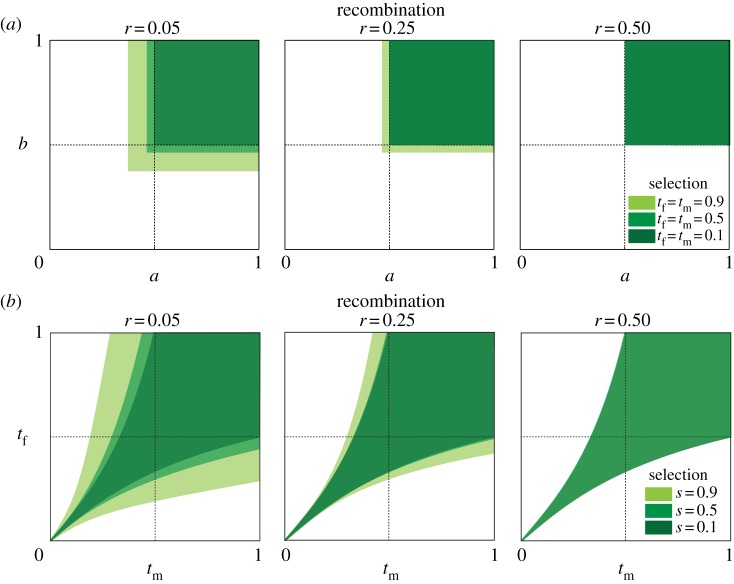Figure 5.
The opportunity for polymorphism with parentally and sexually antagonistic selection. (a) Polymorphism for parentally antagonistic alleles when linked to a sexually antagonistic locus. Shown is the opportunity for polymorphism for the A locus, which experiences parental antagonism, while it is linked to a sexually antagonistic locus, B, at different recombination distances. The opportunity for polymorphism is sensitive to the strength of sexually antagonistic selection (tf, tm). The selection coefficient for the parentally antagonistic locus was s = 0.5 for all runs. The allelic effects for the sexually antagonistic locus are additive (hm = hf = 1/2). For each value of tf (tm) and r, we simulated 10 000 combinations of a and b, the scaling parameters that dictate the fitness of the homozygotes for the A locus. The coloured space represents populations that achieved a polymorphic equilibrium with those values for a and b. (b) Polymorphism for sexually antagonistic alleles when linked to a parentally antagonistic locus. Shown is the opportunity for polymorphism for the B locus, which segregates for sexually antagonistic alleles, whereas it is linked to a parentally antagonistic locus, A, at different recombination distances. The opportunity for polymorphism is sensitive to the strength of parentally antagonistic selection (s) and the recombination rate between loci (r). In the data shown, a = b = 0.75 for the parentally antagonistic locus and the allelic effects for the sexually antagonistic locus are additive (hm = hf = 1/2). For each value of s and r, we simulated 10 000 combinations of tf and tm. The coloured space represents populations that achieved a polymorphic equilibrium with those values for tf and tm.

